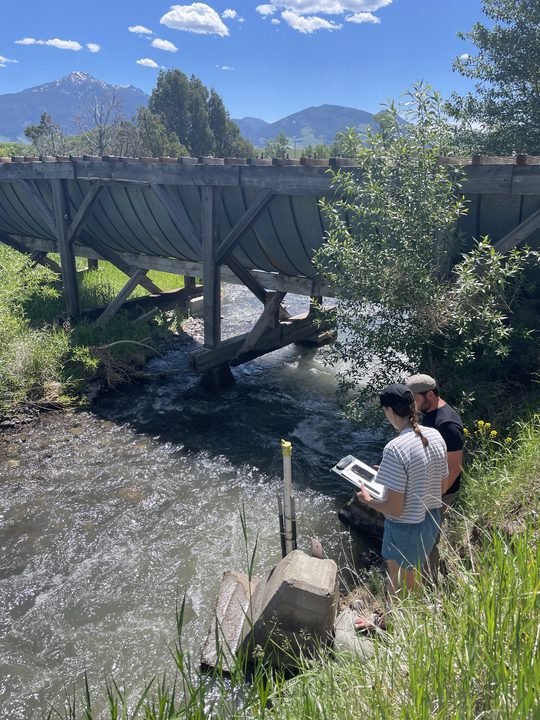On Monday June 13th our community experienced unprecedented flooding of the Yellowstone River which overtook bridges, crumbled roads, and damaged the homes and livelihoods of thousands in the communities of Yellowstone's Northern Range. We are humbled by the power of nature and reminded that while ecological systems are complex and unpredictable, communities are resilient. After seeing the ways that our community has responded, we remain grateful to conduct our land, water, and wildlife monitoring programs with and for the communities of Yellowstone’s Northern Range.
After the flood our staff focused on supporting community clean-up efforts while also focusing on rebuilding parts of our program that were damaged by the unprecedented event.
Our RiverNET field techs are out collecting water quality samples for analysis, processing discharge data, and helping our neighbors-in-need along the way.
We are also working on further developing the predictive capabilities of RiverNET that we have been building for two years. This will equip Park County with 36-hour and 5-days forecasts integrated into an early warning and prediction system for the impacts of flood and drought events before they occur.
Freshwater Forecasting for Drought and Flood Resilience:
We are excited to build on two years of work on a Freshwater Forecasting System and total water budget model for the Upper Yellowstone Watershed to serve our community. This will provide a tributary-level analysis of water balance in addition to serving watershed-wide predictions. We are already working on a simulation of the recent Yellowstone River flood to test the performance of our model under extreme weather events, such as unusually heavy or prolonged precipitation, and rain-on-snow.
These simulations will inform our future survey sample design and help to identify locations for new sensor stations that might serve as an early warning system for both flood and drought events in the watershed.
We will be providing more information on this system in the near future - including during a talk from Dr. Dean Koch, YERC Postdoctoral Associate, the Bozeman Public Library on July 21st - stay tuned for details and a zoom link for attendance if you cannot make it in person.

